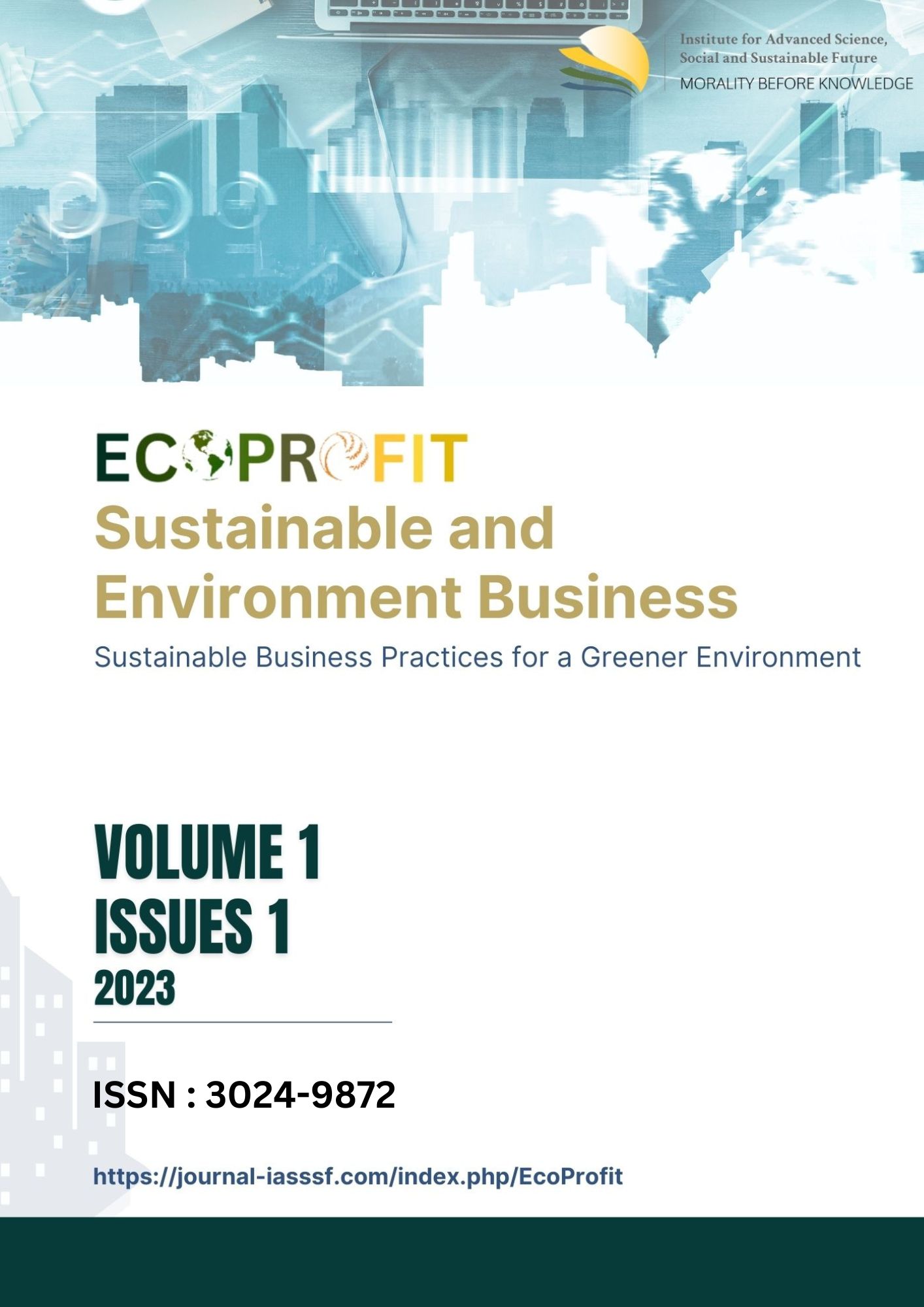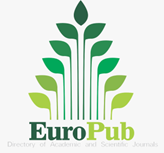Unleashing the green potential: incorporating eco-business and key tourism elements in Kandri Semarang's Villages
DOI:
https://doi.org/10.61511/ecoprofit.v1i1.2023.19Keywords:
eco-business, competitive advantage, kandri semarang, key tourism elements, suburban areas, sustainable tourismAbstract
This paper explores the potential of incorporating eco-business and key tourism elements in Kandri Semarang's villages to enhance their competitive advantage in suburban areas. A case study approach was adopted to examine the status of tourism villages in Kandri Semarang and identify the key tourism elements that can be integrated with eco-business practices. The findings suggest that by embracing sustainable practices and capitalizing on the area's unique natural and cultural resources, tourism villages in Kandri Semarang can differentiate themselves from competitors and attract more tourists. The paper concludes by providing practical recommendations for stakeholders to collaborate and create a sustainable tourism ecosystem that benefits the local community and the environment.
References
Aas, C., Ladkin, A., & Fletcher, J. (2005). Stakeholder collaboration and heritage management. Annals of Tourism Research, 32(1), 28–48. https://doi.org/10.1016/j.annals.2004.04.005
Amerta, I. M. S. (2017). The role of tourism stakeholders at Jasri tourism village development, Karangasem regency. International Journal of Social Sciences and Humanities (IJSSH), 1(2), 20–28. https://dx.doi.org/10.29332/ijssh.v1n2.32
Aref, F., & Gill, S. S. (2009). Rural tourism development through rural cooperatives. Nature and Science, 7(10), 68–73. http://www.sciencepub.net/nature/ns0710/09_1214_Tourism_ns0710.pdf
Ashworth, G. (2009). The instruments of place branding: How is it done? European Spatial Research and Policy, 16(1), 9–22. https://www.ceeol.com/search/article-detail?id=177988
Dauvergne, P., & Lister, J. (2013). Eco-business: A big-brand takeover of sustainability. MIT Press.
Ding, J., Gao, Z., & Ma, S. (2022). Understanding Social Spaces in Tourist Villages through Space Syntax Analysis: Cases of Villages in Huizhou, China. Sustainability, 14(19), 12376. https://doi.org/10.3390/su141912376
Dinnie, K. (2010). City branding: Theory and cases. Springer. https://link.springer.com/book/10.1057/9780230294790
Gertner, D. (2011). Unfolding and configuring two decades of research and publications on place marketing and place branding. Place Branding and Public Diplomacy, 7(2), 91–106. https://doi.org/10.1057/pb.2011.7
Herawati, A., Purwaningsih, A., Pudianti, A., & Surya, R. V. (2014). Rural tourism community empowerment based on local resources for improving community welfare: Case on Pentingsari village, Yogyakarta, Indonesia. Review of Integrative Business and Economics Research, 3(2), 88. http://www.sibresearch.org/uploads/2/7/9/9/2799227/riber_b14-071_88-100.pdf
Hietala, H. (2015). Eco-business: What, Why, How and Who?: A study on Eco-friendliness of Footwear Companies. https://urn.fi/URN:NBN:fi:amk-201505219501
Jyotsna, J. H., & Maurya, U. K. (2019). Experiencing the real village–a netnographic examination of perceived authenticity in rural tourism consumption. Asia Pacific Journal of Tourism Research, 24(8), 750–762.
https://doi.org/10.1080/10941665.2019.1630455
Kastenholz, E., Eusébio, C., Figueiredo, E., & Lima, J. (2012). Accessibility as competitive advantage of a tourism destination: The case of Lousã. In Field guide to case study research in tourism, hospitality and leisure. Emerald Group Publishing Limited. https://doi.org/10.1108/S1871-3173(2012)0000006023
Kondoh, S., Kurakawa, K., Kato, S., Umeda, Y., & Takata, S. (2012). Analysis of Key Success Factors for Eco-Business through Case Studies in Japan. Int. J. Autom. Technol., 6(3), 252–263. https://www.researchgate.net/publication/312653262_Analysis_of_key_success_factors_for_eco-business_through_case_studies_in_Japan
Lane, B. (1994a). What is rural tourism? Journal of Sustainable Tourism, 2(1–2), 7–21. https://doi.org/10.1080/09669589409510680
Lane, B. (1994b). What is rural tourism? Journal of Sustainable Tourism, 2(1–2), 7–21. https://doi.org/10.1080/09669589409510680
Liu, A. (2006). Tourism in rural areas: Kedah, Malaysia. Tourism Management, 27(5), 878–889. https://doi.org/10.1016/j.tourman.2005.05.007
Long, P., & Lane, B. (2000). Rural tourism development. Trends in outdoor recreation, leisure, and tourism.
Munt, I. (1994). Eco-tourism or ego-tourism? Race & Class, 36(1), 49–60. https://doi.org/10.1177/030639689403600104
Nugraha, I. G. P., Antara, I. M., Budiarsa, M., & Paturusi, S. A. (2021). The Role of Social Capital in Serangan Sub-District, Denpasar-Bali. E-Journal of Tourism, 59–64. https://doi.org/10.24922/eot.v8i1.71458
Oka, I. M. D., Winia, I. N., & Sadia, I. K. (2019). The implication of the development of serangan tourist village from the economic perspective. International Conference on Social Science 2019 (ICSS 2019), 1169–1173. https://doi.org/10.2991/icss-19.2019.10
Parantika, A., Wibowo, F. S., & Wiweka, K. (2020). The Development of Thematic Tourist Village of Mulyaharja Bogor Based on Community Empowerment Approach. TRJ Tourism Research Journal, 4(2), 113–132. https://doi.org/10.30647/trj.v4i2.86
Peilin, L. I. U., Ke, P., & Liguo, Y. (2022). The Storage, Expression, and Tourism Value of the Genetic Information of Traditional Village Landscape: A Case Study of Zhongtian Village of Changning City, Hunan Province. Tourism and Hospitality Prospects, 6(2), 1. https://lydk.bisu.edu.cn/EN/10.12054/lydk.bisu.195
Ramaswamy, S., & Sathis Kumar, G. (2010). Tourism and Environment: Pave the Way for Sustainable Eco-Tourism. Tourism and Environment: Pave the Way for Sustainable Eco-Tourism (March 5, 2010). https://dx.doi.org/10.2139/ssrn.1565366
Sasmitha, W. I. R., & Marhaeni, A. (2019). The effect of tourism village development on community empowerment and welfare in tourism village of Panglipuran, Bangli district of Indonesia. Russian Journal of Agricultural and Socio-Economic Sciences, 94(10), 257–265. https://doi.org/10.18551/rjoas.2019-10.33
Tiberghien, G., Bremner, H., & Milne, S. (2017). Performance and visitors’ perception of authenticity in eco-cultural tourism. Tourism Geographies, 19(2), 287–300. https://doi.org/10.1080/14616688.2017.1285958
Wall, G. (1997). Is ecotourism sustainable? Environmental Management, 21(4), 483–491. https://doi.org/10.1007/s002679900044
Wilson, S., Fesenmaier, D. R., Fesenmaier, J., & Van Es, J. C. (2001). Factors for Success in Rural Tourism Development. Journal of Travel Research, 40(2), 132–138. https://doi.org/10.1177/004728750104000203
Xie, P. F., & Wall, G. (2002). Visitors’ perceptions of authenticity at cultural attractions in Hainan, China. International Journal of Tourism Research, 4(5), 353–366. https://doi.org/10.1002/jtr.385
Yoon, Y., & Uysal, M. (2005). An examination of the effects of motivation and satisfaction on destination loyalty: A structural model. Tourism Management, 26(1), 45–56. https://doi.org/10.1016/j.tourman.2003.08.016
Downloads
Published
How to Cite
Issue
Section
Citation Check
License
Copyright (c) 2023 EcoProfit: Sustainable and Environment Business

This work is licensed under a Creative Commons Attribution 4.0 International License.
















